University of Leeds
Type of resources
Topics
Keywords
Contact for the resource
Provided by
Years
Formats
Representation types
Update frequencies
-
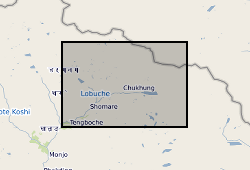
These data consist of a spreadsheet containing 557 ground control points (GCPs) collected in the Everest region of Nepal between October 2015 and October 2016. GCPs were collected using a Leica GS10 differential Global Positioning System (dGPS), post-processed against base station data at Syangboche. These final data have sub-centimetre accuracy (in x, y and z) in all cases. Point positions are heavily concentrated around meltwater ponds on the glacier surface, and prominent features around the glacier margin. These data will be used by PhD students and staff in the School of Geography, University of Leeds, to provide ground control for fine-resolution satellite imagery and Structure-from-Motion surveys to assess mass loss processes on Khumbu Glacier.
-
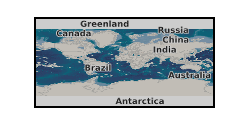
This data set contains example input and output files from density functional theory calculations of rare earth systems, using the Vienna Ab initio Simulation Package (VASP), The data set it split into two parts. The first data set contains the input and output files of molecular dynamics simulations of MCl3 in solution, where (M = Nd, Gd and Er) at ambient conditions, which was modelled at 341 K using the optB88 exchange-correlation functional. The calculations were run in order to investigate speciation in rare earth chloride solutions, including trends across the row, using a light (Nd), medium (Gd) and heavy (Er) rare earth. These particular calculations were used to validate classical interatomic potentials that were used to perform more complex simulation on larger systems and longer timescales. Only the first 2 ps of the trajectories are deposited here, since the complete trajectories are large. The second data set contains example input and output files for lattice dynamics calculations of the thermodynamics properties (heat capacity and entropy) of Nd-monazite and Nd-xenotime at ambient conditions up to 1200 K. In addition, it includes scripts for processing and plots of final results. These are useful for thermodynamical modelling of rare earth systems. Only the input and output files for Nd are deposited here, since the files are large and input files for Gd and Er are identical, save for the change in element.
-
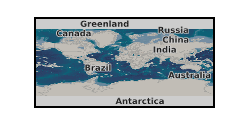
These data files represent simulations of hydrated cation vacancies in the mantle mineral forsterite (Mg2SiO4) undertaken using the CASTEP atomic scale simulation code (http://www.castep.org/). Results from these simulations allow the structure relative stability of different defect configurations to be compared. Three types of cation vacancies are considered (M1, M2 and Si) each decorated by hydrogen in order to charge balance the system. For M1 and M2 this results in multiple configurations (with hydrogen bonded to different oxygen atoms around the vacant site). For Si there is only one configuration as all four oxygen atoms are bonded to hydrogen for the charge neutral defect. For each configuration input files detail the initial atomic structure of the defect along with simulation parameters. Output files record the progress of the simulation, the final atomic structure, the energy of this structure, and various predicted properties of the structure. Only ASCII output data is included as binary data created by CASTEP is not intended to be portable, and can easily be recreated using the ASCII files.
-
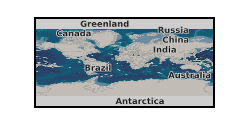
The world's population is predicted to grow from the current 7 billions to a plateau of approximately 9.2 billions to be reached within the next 60 years, representing roughly a 30 % increase in a not so distant future. The need for more energy efficient methods of producing synthetic fertilisers to meet the resulting increases in food demand and in crude (and bio) oils refining operations -on crudes of ever poorer quality- motivates the scientific community to reconsider the limitations of the mature technologies of synthetic fertilisers production and hydro-refining processes (HDS, HDN, HDM, HDO, hydrocracking) which both rely on the supply of hydrogen. Synthetic fertilisers necessitate hydrogen and nitrogen as feedstocks to make ammonia, which represents the building block for other fertilisers such as urea or ammonium nitrate. The current cheapest and most common means of producing hydrogen is natural gas steam reforming. With an abundance of natural gas reserves becoming exploitable worldwide in recent years via the hydraulic fracturing of shale gas, and given the ever more severe regulations on atmospheric pollution caused by flaring of associated gas from refineries and oil extraction operations, the production of hydrogen is very likely to remain dominated in the years to come by the process of steam reforming using natural gas as its feedstock (aka 'steam methane reforming' or 'SMR'). Conventional SMR technology usually features many unit operations (desulphurisation, pre-reforming, primary reforming, furnace, high and low temperature water gas shift (HT-WGS, LT-WGS), and final separation, with as many heat integration steps in between the units in order to reach an energy efficiency of roughly 80%. This efficiency is only attainable thanks to economies of scale, and SMR plants are consequently enormous. To avoid storage and transport costs of H2, the ammonia/ammonium nitrate/urea plants, or refinery operations are usually conducted near the site of SMR, therefore the production of the final products of fertilisers or clean fuels is very centralised, and thus vulnerable, as well as incurring large distribution costs. With sources of natural gas becoming more remote, widely distributed, shorter lived and quickly relocated, the process of converting natural gas to the final products fertiliser/clean fuel should become more mobile, down-scaleable, as fracking gas wells see their production decay with time and move to different sites. This proposal seeks to reduce significantly the energy and materials demand for the conversion of natural gas feedstocks into ready separated streams of the H2, N2 and CO2 products of steam reforming (the building blocks of urea production) by coupling the in-situ high temperature CO2 capture during the reforming reactions on a solid sorbent (a process called 'sorption enhancement') with the process of chemical looping steam reforming. A process is proposed with only two reactors, a reformer and a pressure/temperature swing separator, appropriate for the new, mobile, small scale industrial utilisation of natural gas, through realising the multiple synergies that are unique to the coupled process, and through the avoidance of expensive materials and awkward reformer geometries. Grant number: UKCCSRC-C2-181.
-
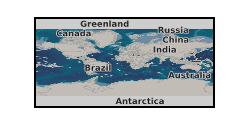
Oxy-fuel combustion has been recognised as one of the very competitive technologies for CO2 capture in the power generation sector. Its importance for CCS technology development in the UK is evident from the Government's recent decision to fund the FEED study on White Rose Partnership project. Traditionally furnace design replies on experience based design plots and some modelling analysis. High concentration of CO2 in oxy-fuel combustion leads to a substantial change in the radiation property of the furnace and therefore CFD modelling is becoming a critical predictive and design tool. The main aims of this project are to collect a comprehensive and much needed set of data for radiation model development by measuring experimentally the combustion and heat transfer properties, including direct radiative heat flux measurements and other combustion processes, in the state-of-the-art 250kW PACT oxy-combustion test facilities and the 35MW large scale oxy-combustion plant at HUST in China. The data will then be used to develop further and validate the next generation Full-Spectrum Correlated k distributions (FSCK) model that is currently under development at Leeds. The developed and validated CFD models may then be employed with more confidence to predict, analyse and optimise the operation of future full scale CCS plant for system scale up. Grant number: UKCCSRC-C2-193.
-
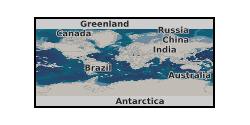
This poster on the UKCCSRC Call 2 project, Novel Materials and Reforming Processing Route for the Production of Ready-Separated CO2/N2/H2 from Natural Gas Feedstocks, was presented at the Cardiff Biannual, 10.09.14. Grant number: UKCCSRC-C2-181.
-
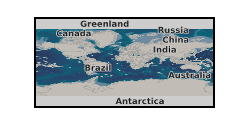
This poster on the UKCCSRC Call 2 project, Investigating the radiative heat flux in small and large scale oxy-coal furnaces for CFD model development and system scale up, was presented at the Cranfield Biannual, 21.04.15. Grant number: UKCCSRC-C2-193.
-
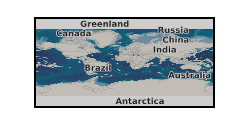
This poster on the UKCCSRC Call 2 project, Investigating the radiative heat flux in small and large scale oxy-coal furnaces for CFD model development and system scale up, was presented at the Cardiff Biannual, 10.09.14. Grant number: UKCCSRC-C2-193.
-
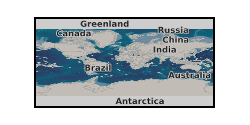
This poster on the UKCCSRC Call 2 project Novel Materials and Reforming Process Route for the Production of Ready-Separated CO2/N2/H2 from Natural Gas Feedstocks was presented at the CSLF Call project poster reception, London, 27.06.16. Grant number: UKCCSRC-C2-181. Large reserves of shale gas and unconventional gases worldwide will ensure that hydrogen remains produced mainly via the catalytic steam reforming process (C-SR) for the next few decades. In conventional C-SR, the most energy intensive step is the production of syngas (CO+H2) in the primary reformer which relies on fired heaters in large scale furnaces. SR plants need to be enormous in order to be economical due to syngas production stage and H2 purification steps.
-
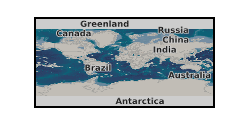
This poster on the UKCCSRC Call 2 project Investigating the radiative heat flux in small and large scale oxy-coal furnaces for CFD model development and system scale up was presented at the CSLF Call project poster reception, London, 27.06.16. Grant number: UKCCSRC-C2-193. Oxy-fuel (coal or biomass) combustion significantly changes the heat transfer properties of power plant furnaces. Thus future power plants using oxy-fuel technology will rely greatly on computational modelling. This project aims to collect combustion and heat transfer data from both small and large scale furnaces and to validate the computational model in order to make it ready for future technology scale up. Specific objectives are: • Take measurements at the 250 kW oxy-coal furnace at PACT national facilities in Sheffield, including combustion and heat transfer data. • Take measurements at a 35 MW oxy-coal furnace in China. • Validate CFD models developed and investigate the combustion and heat transfer properties in both large and small furnaces.
 BGS Data Catalogue
BGS Data Catalogue